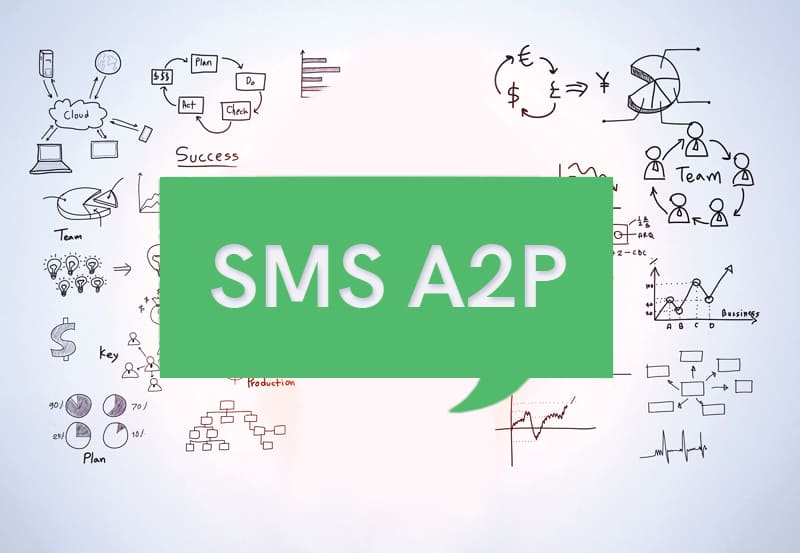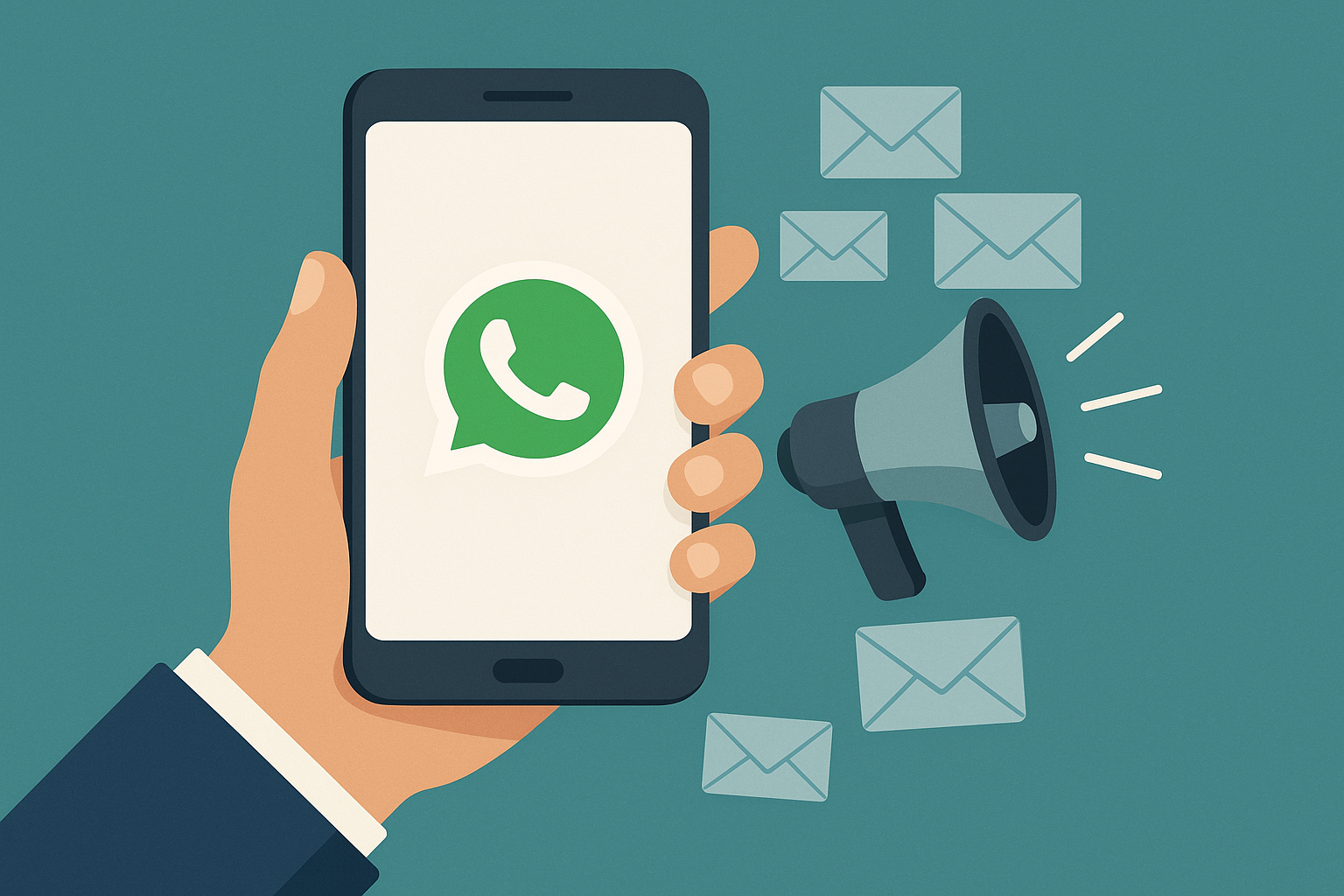Ci sono più messaggi mobili che vanno avanti e indietro nel mondo oggi che mai nella storia dell’umanità; e sebbene il canale SMS abbia più di 20 anni, sembra che il supporto di testo sia sull’orlo di una nuova era.
Since the beginning of the decade, the mobile phone industry has observed the rise of high-end messaging (OTT) apps as Whatsapp; Facebook Messenger e WeChat con cauto interesse. Mentre si è discusso molto se questi servizi integreranno o competeranno con gli SMS; le app OTT hanno già eclissato gli SMS come mezzo principale per le comunicazioni P2P (da persona a persona) attraverso tutti i dati demografici.
However, instead of OTT messaging completely eradicating SMS as some have predicted; SMS has actually found a happy balance as something of a fail-safe backup in the event of no data coverage or OTT fragmentation.
From P2P to A2P messaging
Nonostante questa forte concorrenza, non è così che finisce la storia per gli SMS. Mentre SMS può essere più la prima scelta per i consumatori, nel settore aziendale il suo utilizzo per l’impegno dei clienti in tutte le sue forme sta accelerando rapidamente – e con buone ragioni.
Mentre le app di messaggistica hanno funzionalità migliorate, SMS rimane l’unica piattaforma di messaggistica globale onnipresente e l’unica con un sistema di indirizzamento unico e riconosciuto a livello globale. Funziona su ogni telefono e su qualsiasi rete ed è anche il più affidabile dai consumatori. Questi lo rendono appropriato per ogni tipo di comunicazione aziendale e mission-critical.
Di conseguenza, le aziende di più settori verticali come quelli finanziari, commerciali e sanitari si rivolgono sempre più agli SMS. Negli ultimi anni, il cosiddetto mercato A2P (application-to-person) ha registrato un’enorme crescita, secondo cui l’analista mobileSQUARED prevede un valore di quasi $ 60 miliardi entro il 2020, rispetto ai $ 12 miliardi del 2015.
Il consenso tra gli analisti del settore è che A2P continuerà a crescere in modo significativo, con Credence Research ha recentemente previsto che le imprese trasmetteranno due trilioni di messaggi SMS all’anno entro il 2017.
Uno dei motivi dell’ottimismo che circonda la messaggistica A2P si basa sulla facilità con cui è diventato integrato SMS. Gli sviluppatori possono facilmente creare app che inviano messaggi agli utenti interamente tramite software. Non hanno bisogno di negoziare con MNO o aggregatori e utilizzando una semplice API nelle loro app, possono inviare messaggi SMS agli utenti.
Questa semplicità ha contribuito ad accelerare l’adozione della messaggistica A2P. Il rapporto Mobile Messaging 2016 dell’organo globale di commercio mobile di MEF ha rilevato che il 76% dei consumatori riceve comunicazioni via SMS, da aziende come banche, assistenza sanitaria e rivenditori, mentre il 65% ha interagito con aziende tramite app di chat.
Financial services lead the way for messaging A2P
Il settore dei servizi finanziari è attualmente all’avanguardia nella messaggistica A2P, con il 33% delle persone che ha ricevuto un messaggio SMS da un istituto finanziario. Ciò si confronta con il 17% di una scuola, il 16% di un operatore sanitario e persino il 23% di un rivenditore o di una società di e-commerce.
Probabilmente ci sono due ragioni per questo. Il primo è che i testi con password una tantum costituiscono una parte importante dell’autenticazione bancaria (ad esempio quando si configura un nuovo beneficiario). In effetti, un’altra scoperta mostra che “confermare una password” è il caso d’uso più comune per gli SMS A2P. È stato utilizzato dal 30% delle persone almeno una volta nell’ultimo anno.
L’altro probabile motivo di tanta attività testuale con le banche potrebbe essere il risparmio sulle commissioni. Nel Regno Unito, ad esempio, gli avvisi di testo hanno ampiamente sostituito le lettere come mezzo per informare un cliente che si avvicinano al limite di scoperto. La capacità di agire su tale avviso consente ai clienti di risparmiare milioni di sterline.
In effetti, nel 2015 la Financial Conduct Authority (FCA) ha affermato che la sottoscrizione di avvisi di testo e app di mobile banking riduce la quantità di spese di scoperto non ordinate sostenute fino al 24%.
Questi sviluppi riflettono una migrazione costante dai servizi bancari fisici. In tutto il mondo stanno aprendo nuove banche “sfidanti” – Fidor, Number 26, Tandem, Mondo e molte altre – che esistono puramente come entità digitali basate su app.
Tuttavia, attualmente il più popolare “uso aziendale” degli SMS è la conferma di una password attraverso un processo di autenticazione a due fattori.
The future of A2P messaging
SMS sta entrando in una nuova ed eccitante era; guidato dalla sua versatilità senza pari e dalla semplicità di integrazione API. Di conseguenza, le aziende stanno trovando gli SMS sempre più efficaci per una moltitudine crescente di attività incentrate sui clienti, ma questo potrebbe essere solo l’inizio.
La crescita nella distribuzione di dispositivi IoT ha la connettività al centro. Inoltre, Machina Research prevede che 2,2 miliardi di dispositivi saranno collegati tramite reti mobili entro il 2024. E come, ad esempio, un’auto connessa comunicherà il fatto che ha una parte difettosa per un tecnico dell’assistenza? SMS ovviamente.
Tuttavia, la fase successiva della crescita di A2P potrebbe preannunciare un’evoluzione ancora più fondamentale nel rapporto tra impresa e consumatore: lo spostamento verso il commercio “conversazionale”. Descrive le comunicazioni testuali tra un cliente e un’azienda che avvengono in tempo reale, come una conversazione.
In sostanza, i clienti saranno in grado di “chattare” con un bot come se fosse un operatore umano. Molti credono che il commercio conversazionale possa definire la prossima fase delle comunicazioni di marchio / consumatore e rendere le app di messaggistica ancora più centrali nella vita delle persone con SMS che svolgono un ruolo centrale.




